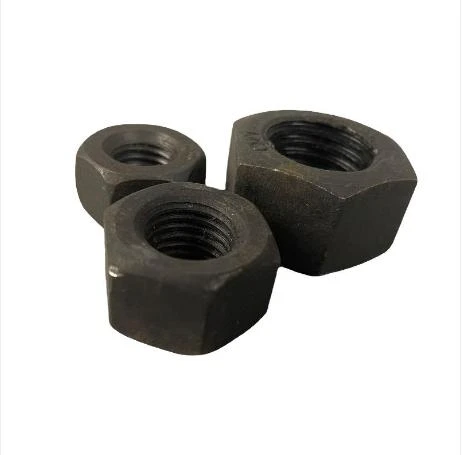

Different Types of Spring Washers and Their Applications in Various Industries
Th12 . 03, 2024 23:51 Back to list
Different Types of Spring Washers and Their Applications in Various Industries
Understanding Spring Washer Types A Comprehensive Guide
Spring washers are a crucial element in mechanical assemblies, designed to provide a reliable means of maintaining tension and preventing loosening under variable loads and vibrations. Their unique shapes and spring action help absorb shock and distribute loads more evenly across fasteners, enhancing the overall durability and reliability of joints. In this article, we will explore various types of spring washers, their applications, and key considerations for selection.
1. What Are Spring Washers?
Spring washers are a type of washer characterized by their ability to apply continual pressure, which counters the effects of load and vibration. They are typically made from resilient materials, such as steel or stainless steel, and are engineered to return to their original shape after being compressed. This characteristic makes them ideal for use in applications where bolted connections may loosen due to movement or thermal expansion.
2. Common Types of Spring Washers
Spring washers can be categorized into several types, each suited for specific functions and applications. Here are some of the most common types
a. Common Belleville Washer (Conical Washer)
Belleville washers, or conical washers, have a conical shape that allows them to exert a high spring force within a relatively small axial space. Their design helps in maintaining a load over a significant range of deformation, making them ideal for high-stress applications such as automotive and aerospace components. Belleville washers can be stacked to achieve varying spring rates, providing flexibility in design.
b. Split Lock Washer
The split lock washer has a distinctive shape that resembles a spiral cut. When placed under a nut or bolt head, it exerts pressure to lock the fastener in place, preventing it from loosening. This type of washer is commonly used in machinery and automotive applications because it offers a reliable locking mechanism that resists rotational loosening caused by vibrations.
c
. Wave WasherWave washers are designed with a wavy shape, allowing them to compress and expand as needed. They provide a cushioning effect, which makes them useful in applications that involve slight axial movement. Their design is particularly beneficial in applications such as electric motors, where they can accommodate thermal expansion without compromising joint integrity.
spring washer types

d. Disc Spring Washer
Disc spring washers are engineered for heavy-duty applications with a high load rating. They feature a flat disc shape and are often used in applications requiring high return force without significant vertical space. Disc springs are typically seen in machinery and heavy equipment, providing stability and support under extreme conditions.
e. Cuplock Washer
Cup lock washers, shaped like a bowl or cup, are utilized primarily in applications where increased contact area is beneficial. They provide a uniform load distribution and are particularly effective in situations where the surfaces being joined are uneven or have a risk of wear.
3. Applications of Spring Washers
Spring washers are found in a plethora of industries, including automotive, aerospace, construction, and machinery. Their usage extends across various applications
- Automotive Used in engines, suspensions, and various assemblies to control tension and enhance durability. - Aerospace Critical in maintaining joints under extreme conditions involving vibrations and temperature changes. - Construction Implemented in bolted connections in structural supports and frameworks to ensure stability. - Electronics Utilized in circuit boards and devices where shock absorption and stability are necessary.
4. Selecting the Right Spring Washer
Choosing the correct spring washer involves considering several factors
- Load Requirements Assess the type of load the washer will endure—static or dynamic—along with the frequency and amplitude of vibrations. - Material Compatibility Select materials that withstand environmental conditions, including corrosion, temperature variations, and chemical exposure. - Space Constraints Consider the dimensional limits of the application, as some washers require specific clearances and may not fit in tight spaces.
5. Conclusion
Spring washers play an essential role in securing and maintaining the integrity of mechanical assemblies. Understanding the different types of spring washers and their specific functions can help engineers and designers choose the right components for their applications. By selecting the appropriate spring washer, one can enhance the durability and reliability of mechanical joints, ensuring long-term performance in various challenging conditions. With the right choice, the benefits of using spring washers can significantly optimize the safety and efficiency of engineered products.
Latest news
-
Similarities and Differences Between Plain Washer and Spring Washer - Fastener Comparison Guide
NewsJun.10,2025
-
Effortless Installation Self-Drilling Window Screws - Fast, Secure, and Durable Fasteners
NewsJun.10,2025
-
Self Drilling Stucco Screws for Fast, Secure Installation Self Tapping & Self-Tapping Fasteners
NewsJun.10,2025
-
Premium Hot Dipped Galvanized Self Tapping Screws - Durable Corrosion Resistance
NewsJun.09,2025
-
Discover M12 Weld Stud Benefits & Applications Guide
NewsJun.09,2025
-
M25 Stainless Steel Washers High-Durability Fasteners for Corrosion Resistance
NewsJun.09,2025

